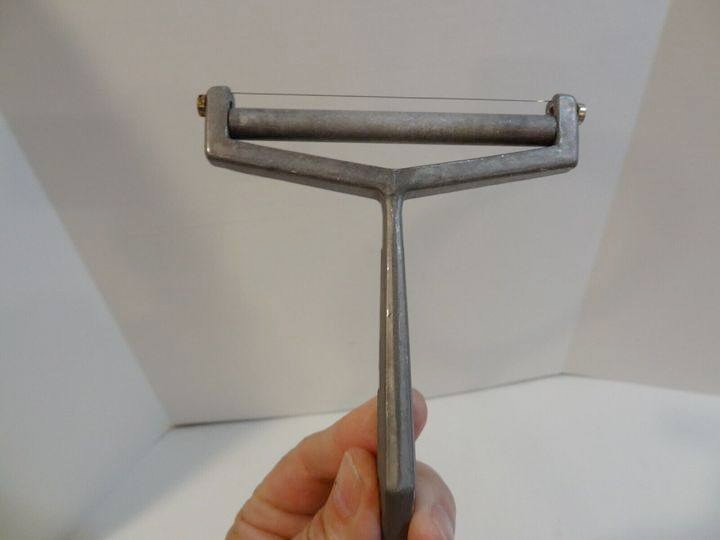Have you ever come across an object that piqued your curiosity? Something that made you wonder about its purpose and origin? Today we have a fascinating item to share with you: the cheese slicer. Prepare to be amazed as we delve deeper into the enigma surrounding this unique tool.
The cheese slicer is an unassuming but indispensable appliance found in both home kitchens and professional culinary settings. Its history is as diverse and intriguing as the cheeses it effortlessly slices. This simple device, designed to slice cheese with precision and ease, emerged from a combination of necessity and innovation, and reflects broader trends in culinary practices and dairy consumption.
The origins of the cheese slicer date back to the early 20th century in Norway, a country famous for its dairy products and cheesemaking tradition. The credit for its invention goes to Thor Bjørklund, a Norwegian carpenter and inventor who, in 1925, was frustrated by the difficulty of cutting uniform slices of cheese with a regular knife.
Drawing on his carpentry skills, Bjørklund designed the first cheese cutter, inspired by a carpenter’s plane. His design featured a wooden handle attached to a metal blade with an adjustable, slotted guide, allowing for smooth, even slices of cheese to be cut without the need for a knife. This invention not only demonstrated Bjørklund’s ingenuity, but also addressed a common challenge in the kitchen, revolutionizing the way cheese is served and enjoyed.
Bjørklund’s cheese cutter quickly gained popularity in Norway and soon spread throughout Europe and the United States. Its appeal lay in its simplicity and effectiveness, making it a must-have kitchen tool. The ability to produce uniform slices of cheese with minimal effort and waste made it especially attractive to both homes and restaurants. By the mid-20th century, the cheese cutter had become a standard item in many Western kitchens, indicating the growing interest in and consumption of cheese as a staple food.
Over the years, cheese slicer design has evolved, with different materials and mechanisms being introduced to suit different types of cheese and user preferences. Modern cheese slicers come in a variety of forms, from the traditional handheld design with a taut wire cutter to more elaborate models with adjustable rollers and blades to cut cheese of varying hardness. Despite these advances, the fundamental principle behind Bjørklund’s original design remains unchanged, attesting to its enduring efficiency and practicality.
The history of the cheese slicer also reflects broader cultural and culinary changes. Its invention and widespread adoption coincide with a period of significant change in food production and consumption patterns. The early 20th century saw a trend toward standardized and convenient food preparation methods, driven by technological advances and changing lifestyles. In this context, the cheese slicer represents a move toward greater efficiency and consistency in food preparation, reflecting the broader trends of the time.
